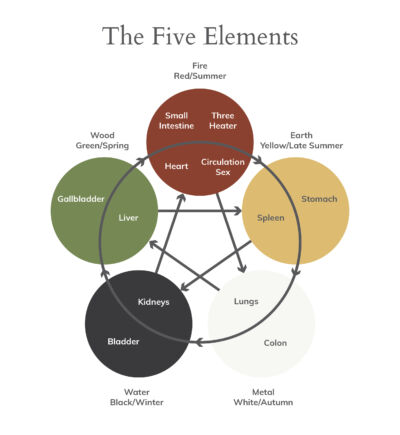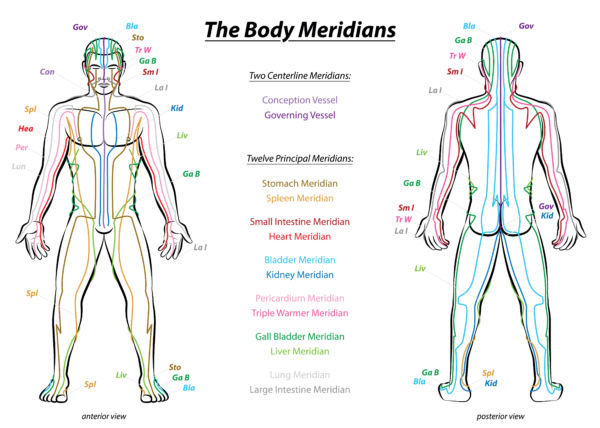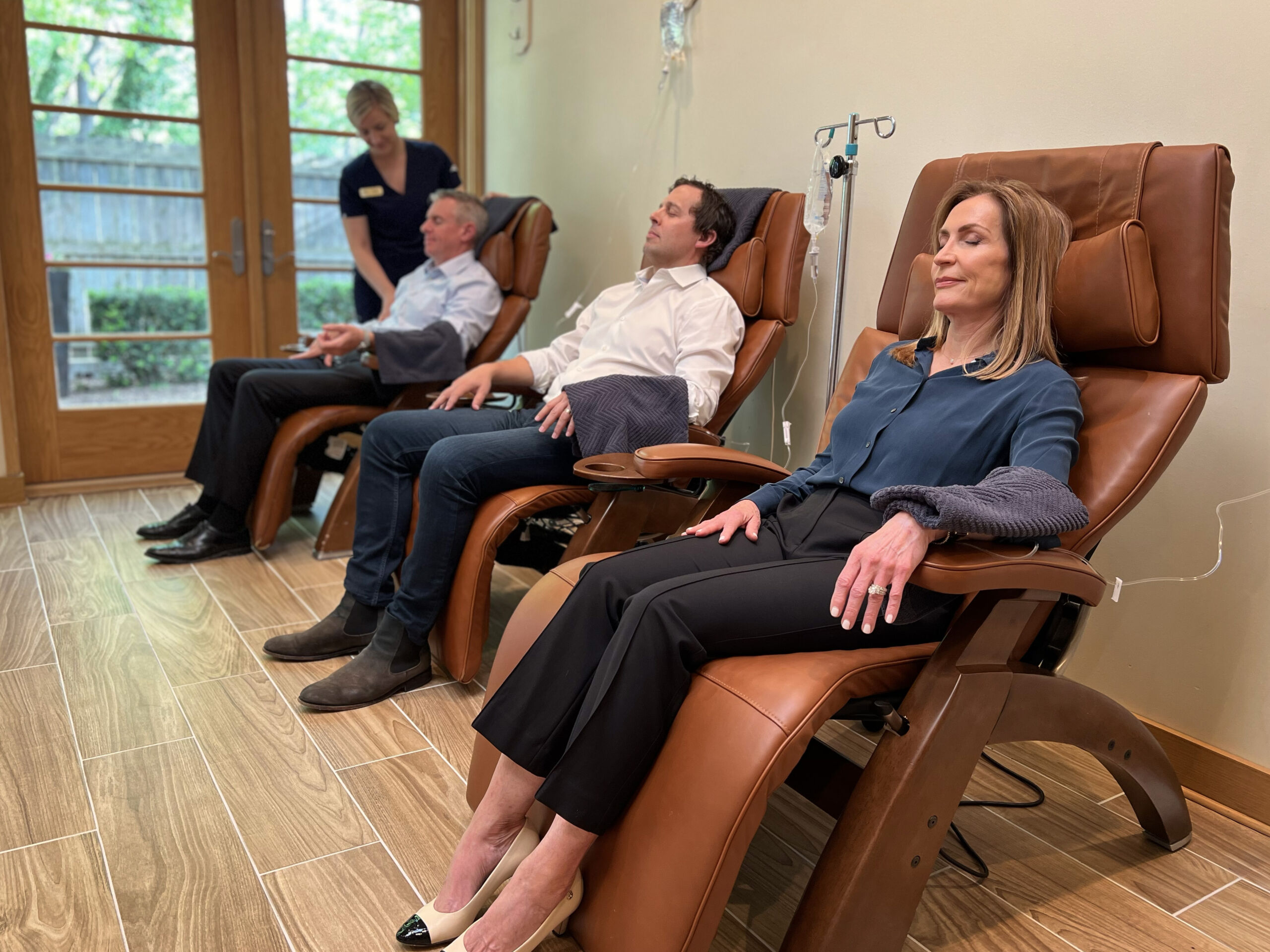You’ve probably heard of acupuncture before, or even have some experience with it. You may have wondered, why are needles used? What do they do? Does it hurt? It may seem like an intimidating treatment at first glance, but the benefits of acupuncture and acupressure extend far beyond what you might think — and so does the science behind it.
Acupuncture involves penetrating the topmost layer of skin at precisely-chosen points with very thin needles. Because the needles are so thin, patients typically experience little to no pain. The needles are then carefully activated with light pressure, movement, or stimulation.
As an alternative, acupressure targets those same precise points under the skin, but with manual pressure or cupping rather than needles. Other non-needle techniques, which are equally effective, include lasers or a specific low level electrical current. These are ideal for patients who are uncomfortable with needles.
According to acupuncturist Dr. Lily Liu, the practice of acupuncture is an ancient one: “It dates back more than a thousand years, stemming from Traditional Chinese Medicine (TCM).” TCM, and acupuncture specifically, is rooted in the Eastern theories of energy medicine, which promote healing differently than the Western medicine you may be used to. Eastern medicine focuses on energy balance throughout your body as the key determinant of your overall health.
Oftentimes, physical symptoms can be made worse by, or even result from, an imbalance of energy in your body rather than an issue in the particular spot where you are experiencing discomfort. Health is all about balance, and when it is thrown off, you become more susceptible to disease. Energy is the director of your body’s harmony; its movement is crucial to your health.
TCM defines this vital energy as your “qi” or “chi” (pronounced “chee”), which runs through twelve main pathways, or meridians, throughout your body. Think of your circulatory system of blood or oxygen — your energy has a very similar kind of circulation. The meridians that circulate your energy are dotted with points, called “acupoints,” that are the target of acupuncture treatments.
What is Qi?
Qi energy provides your body with life. We have many types of qi — two examples are inherited qi and gong qi.
According to chiropractor and acupuncturist Dr. David Trybus, “Inherited qi is the energy you are born with, and gong qi is your daily energy stock. Once you deplete your gong qi, your body begins to pull energy from the inherited qi stock to make up for it, and this provides the groundwork for aging.” As your body burns through its inherited qi, you begin to experience graying, arthritic changes such as muscle or joint stiffness, and other telltale signs of aging.
Similarly, this vital energy is responsible for keeping you healthy. Having a reliable, strong flow of qi through your body is the foundation for well-being, and conversely, disruption of this flow — when qi becomes blocked — can contribute to ill-being. “Toxic environments, overworking, and stress, among other things, can all contribute to an imbalance in your qi,” says Dr. Liu.
The Meridian System
So how does this circulatory system of energy actually work? Your body has twelve main meridians, or energetic passageways, that pass through the top layer of skin and fascia and through which your qi flows.
Think of twelve different extension cords plugged in end to end and intertwined. If you were to unravel them, they would form one big circle. Thus, they are all connected.
Ten of these twelve meridians are associated with a specific organ: the heart, lung, stomach, kidney, large intestine, small intestine, liver, bladder, gallbladder, and spleen are each represented by a meridian. The remaining two are the pericardium meridian, which is linked to emotional and spiritual well-being, and the triple-warmer meridian, which controls metabolism.
Remember that these meridians connect with each other end to end, like extension cords, which is critical for the flow of your qi. For example, the bladder meridian runs from your eye, over your head, down the back all the way to your big toe, and at the big toe, it connects to the kidney meridian. The kidney meridian then runs back up the inner legs and up your torso and chest. The pathways continue to connect like this and travel up and down the trunk, legs, arms, and head.
The meridian system also uses the concept of yin and yang to define how qi flows directionally and maintains balance. The yin and yang principle of duality can be seen in everything: you can’t have dark without light, or hot without cold. It is the same with your organs: you have “yin” organs that are solid (heart, liver, spleen, kidney, and lungs) and “yang” organs that are hollow (stomach, bladder, gallbladder, large intestine, and small intestine).
 Think about this: if you are over-stressed or too high-energy, your yang organs are most likely overworking and dominating your yin organs, or vice versa. This is one reason why maintaining a balance between the yin and yang organs by controlling the energy flow through your body’s meridians is so important to your health.
Think about this: if you are over-stressed or too high-energy, your yang organs are most likely overworking and dominating your yin organs, or vice versa. This is one reason why maintaining a balance between the yin and yang organs by controlling the energy flow through your body’s meridians is so important to your health.
“Every yin organ is paired up with a yang organ, and the two organs within each pair have opposite functions that balance one another out—yin organs calm things down, while yang organs stimulate,” says Dr. Trybus.
The five organ pairs, as shown in the chart, are each governed by an element (wood, fire, earth, metal, and water). Your constitution is made up of these five elements, and the different elements have attributes that provide guidelines for treating and diagnosing issues with their corresponding organs through their meridians.
While all five elements coexist within each person, you have one that is your dominant element, which is mostly dependent upon your character traits, habits, and health patterns. Your dominant element loosely governs your persona as well as the best ways to go about tending to any energetic imbalances in your body.
If your dominant element is Metal, for example, it is important for you to keep your lungs and large intestine healthy and energized above all others because those are the organs associated with that element and are considered your “baseline” of overall health. Each element has its own set of attributes, healing methods, helpful yoga poses, nourishing foods, and more that are uniquely attuned to its common ailments and what it needs to thrive.
Take our free Elements Questionnaire to find out what your dominant element is and what that means for you.
Because they are all connected, you have to keep each meridian energized in order to keep the others energized as well and maintain a balance in your body. A blockage in a meridian (like unplugging two of the extension cords in the circuit) causes an interruption in the flow of energy. The qi may then find a way to reroute itself through other meridians, but this will lead to a buildup of energy on one side of the blockage and a deficiency of energy on the other.
Such an energy imbalance directly relates to health issues. For example, if you have a problem with your small intestine, your small intestine meridian is likely drained of energy (creating a blockage) and forcing the other meridians to overcompensate, resulting in an energetic yin/yang imbalance that will lead to further symptoms.
The meridians are also the way that your muscles get their energy. Each meridian organ corresponds to a muscle group — for example, the kidney is associated with the lower back muscles, and the small intestine is associated with the quadriceps and abdominal muscles. So, if you experience core weakness or trouble climbing stairs due to leg weakness, that could be a signal that something isn’t right with your small intestine and that the corresponding meridian could be low on energy.
Acupuncture as an Energy Treatment
You may be wondering how you can actually go about fixing these energy blockages. It all goes back to acupuncture. As mentioned before, each meridian has several points, called “acupoints,” along its length.
Stimulating these points encourages a better energy flow through the drained or blocked areas, restoring a healthy qi balance so that your body is in the best possible energetic state to be able to handle the mental, physical, and emotional stressors of life.
“Pain is the most common issue we use acupuncture to treat. Whether it is a headache, muscle pain, or joint pain, acupuncture provides quick relief,” says Dr. Liu. Acupuncture treatments can also address gastrointestinal problems and hormone imbalances, particularly in women.
Stimulating these points with various acupuncture and acupressure methods like needles, cupping, laser, electric, or even manual pressure—which are offered by specialists at PALM Health — releases energy blockages through the acupoints. Not only that, but acupoint stimulation also activates the central nervous system and draws attention to a certain area to which the brain sends healing signals.
Energy medicine and acupuncture specialists can also perform an AcuGraph assessment to provide an insight into where your pain or symptoms could be coming from.
The AcuGraph essentially gives a summary of your energetic makeup — it shows which organs are too low, too high, or just right in energy levels. Typically, an AcuGraph assessment is part of your initial acupuncture session.
For example, if you had the symptom of lower back pain and you took an AcuGraph assessment, it might show you that the energy in your kidneys is too low, since the kidneys directly correlate to the lower back muscle groups.
This would then signify some kind of blockage or deficiency in the kidney meridian, and in response the provider would use acupuncture or acupressure to stimulate qi flow back into that meridian to bring the kidney’s energy levels back up. Your body would then be in a better state to proceed with treatment of the kidney issue.
While acupuncture isn’t necessarily a stand-alone treatment that is guaranteed to heal you completely, it does use the body’s inherent mechanisms to address symptoms and restore balance. Acupuncture is often a key first step in treating any health concerns you may have, and is meant to be used in conjunction with recommendations from your regular medical provider.
Members can book an Initial Acupuncture/Acupressure Visit with Dr. Lily Liu for just $195. Give us a call at 314-801-8898 option 1 or send us a message to schedule your visit.
If you’re not a member but are interested in seeing Dr. Liu for acupuncture, chat with our Navigators at 314-801-8898 option 0 about how you can proceed, or send us a message.
PALM Health is an innovative lifestyle medicine and wellness center that offers a comprehensive range of advanced medical and wellness services, empowering people to transform their health and feel their best in mind and body.









